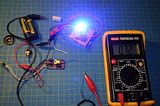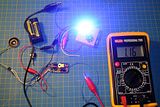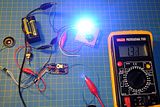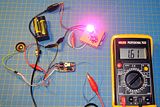Well, first thing I would try is to check if you have any fried transistor on the board after the tests.
Just wire everything up without LED and transistor and measure the voltage between the LED+ and LED- pads.
If the voltage is 0 when the board is off everything should work fine; when active the output voltage should get near battery voltage.
In my case, with a fried transistor I was getting around 2.3V with the board turned off.
I saw the same behavior with a Yoda Force FX with 3 fried transistors (not my fault there

) and the boards are pretty similar in design in the LED driving section; I did a similar mod with the Yoda board and it's working like a charm again.
If you discover that one (or more) transistor is fried, you can replace the board again or try with my modification.
Just make sure to use a PNP transistor like the TIP42 (or equivalents) because we need to be consistent when replacing the transistors on the board which are PNP.
Regarding the main issue with lower current output I would suggest two things.
First, I would wire the P4 negative directly to the battery negative.
Sometimes the tracks on the boards are simply not designed to carry high currents.
Second, considering that you are using a single 18650 lithium battery providing 3,7V, I would wire the P4 without resistor.
The max forward voltage accepted by the P4 green is 4.1V, so with 3.7V should be definitely safe to discard the resistor.
To check the P4 specs you can download the datasheet
here.





 Reply With Quote
Reply With Quote











Bookmarks